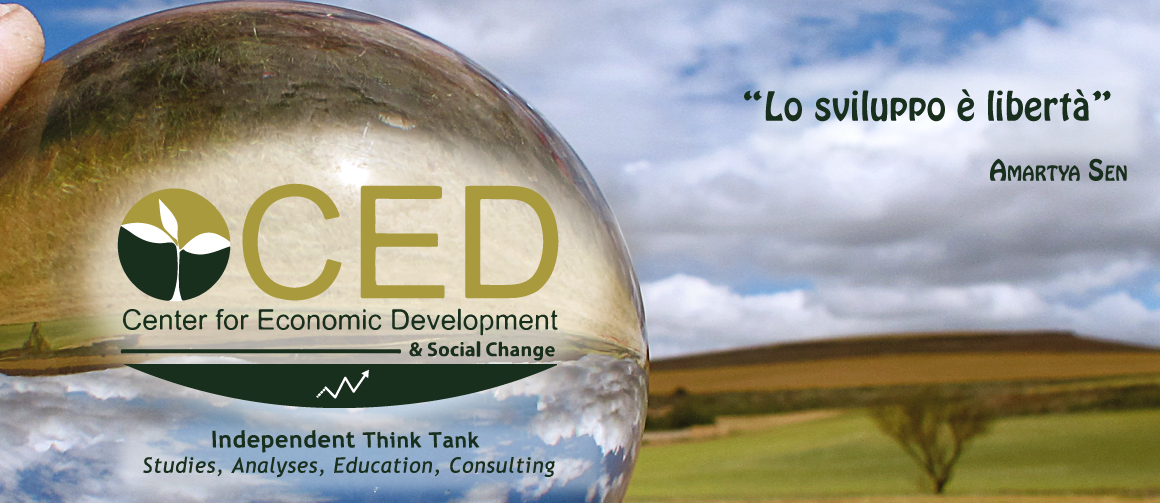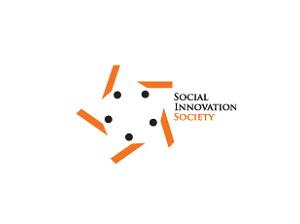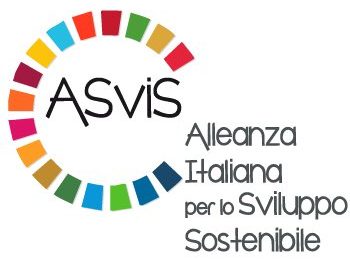
The global economic growth is facing increasing challenges in terms of sustainability. Under this assumption, the new model of Circular Economy (CE) takes place: it promises economic growth with low or zero costs in terms of materials, energy and environmental impact. As the Industrial Revolution promised benefits from an excess availability of resources, the CE takes advantage of resources constraints.
We can start examining the model starting from the more involved country in this challenge: the People’s Republic of China. Since the 80s, the Chinese economy has faced an unprecedented economic development together with an exponential population growth, at the expense of increasing environmental impact. This growth dynamic is likely to reflect the growth path of the majority of developing countries.
Indeed, as the middle class will grow together with disposable income, the demand of primary commodity (minerals, metals and fossil fuels) will follow as well. Together with increasing costs of exploration and extraction, the commodity prices and their volatility would constantly increase in the long run. The following graph shows how the increase in prices since 2000 have erased the price’s decline occurring over the past century. The price Index (developed by McKinsey) includes alimentary, agricultural, mineral and energy products.
![[McKinsey Commodity Price Index. Fonte: Grilli and Yang; Pfaffenzeller; World Bank; International Monetary Fund; Organisation for Economic Cooperation and Development (OECD) statistics; Food and Agriculture Organization of the United Nations (FAO); UN Comtrade; McKinsey Global Institute analysis].](https://i1.wp.com/www.ced-center.it/wp-content/uploads/2016/09/figura-1.png?resize=828%2C426)
[McKinsey Commodity Price Index. Fonte: Grilli and Yang; Pfaffenzeller; World Bank; International Monetary Fund; Organisation for Economic Cooperation and Development (OECD) statistics; Food and Agriculture Organization of the United Nations (FAO); UN Comtrade; McKinsey Global Institute analysis].
In the attempt to limit the excessive use of resources, policy makers have adopted the solution given by creating an environmental taxation. The taxation, matching the private marginal cost to the social marginal cost (including negative environmental externalities), re-establishes an optimal allocation of resources. Recently, this instrument seems no longer appropriate in tackling the increasing resources depletion.
Circular Economy promises economic growth with low or zero costs in terms of materials, energy and environmental impact.
The idea of CE spread during the 70s thanks to the academics Kenneth E. Boulding, John T. Lyle e Walter R. Stahel, and it is adopted during the 90s by David Pearce. The economic model, replacing the sustainability models of de-growth and steady state, takes place from systems theory applied to Industrial and Ecological economics. The model is based on sharing, leasing, retrofitting, reusing and recycling in an (almost) closed circular loop. The objectives are to obtain the highest resource utility, optimising the value of raw and waste materials (urban and industrial), promoting efficiency and reducing the waste to minimum. The waste management has a central role: from the creation of a secondary market to the development of new products and renewable energy. The CE redefines the concept of ownership: the final consumer only benefits a service. Paying a price, he temporarily utilises a certain amount of resources and materials, returning them at the end of their use.
In 2002, the idea of CE was implemented by the Chinese government as a development policy able to alleviate the contrast between economic development and natural resources depletion. In the last decade of Chinese experience, the outcome has been overall productivity and efficiency gains in the use of input (production) and output (consumption). A larger adoption of the CE vision would stabilise commodity prices ensuring a stable demand of raw materials, diminishing the import dependency and improving the trade balance. An economy less vulnerable to shocks (of price or demand) would be more resilient, stimulating investments.
At a European level, the 2nd December 2015, the European Commission adopted a reform package supporting CE. The European Action Plan introduces concrete guidelines about the life cycle of a product: from production (for example Eco-design) and consumption (Green Public Procurement), to the waste management and secondary market for waste materials. A regulatory scheme (obligations and standards) together with a legal framework would ensure competition and sanctions, thanks to monitoring and prevention systems. The expectations are high: increasing competitiveness and growth also through the development of eco-industrial parks, industrial networks in symbiosis able to incentivise efficiency, technological innovation and employment through resources exchanges.
The objectives are to obtain the highest resource utility, optimising the value of raw and waste materials (urban and industrial), promoting efficiency and reducing the waste to minimum.
Eco-efficiency and waste management
Increasing efficiency means to improve the ratio between input (environmental impact) and output (return) through behavior, technology and planning. The reasons to achieve better efficiency are many: the scarcity of resources, the increasing environmental impact and the promised economic return. The challenges are also many. First, incentives are low. That is because of the low cost of some resources, too low to encourage recycling and efficiency. Moreover, investments in efficiency require pay-back periods longer than the industrial standard, beyond a large financial capital. Incineration of waste materials for energy recovery would be a great success. The incineration plants treat the waste materials in order to avoid pollutants to enter the recycling chain. These residuals are converted to energy (steam or electricity). Metals and minerals instead, are sent to secondary market. A significant portion of these materials is composed by organic matter (biomass), which means production of renewable energy. Increasing energy production stemming from these materials would diversify energy sources edging toward renewables, increasing its production capacity and pushing toward a reduction in the price of energy.
Increasing efficiency means to improve the ratio between input (environmental impact) and output (return) through behavior, technology and planning. The reasons to achieve better efficiency are many: the scarcity of resources, the increasing environmental impact and the promised economic return.
Eco-industrial parks
CE implies the development of eco-industrial parks (EIP). Because of their complexity, these industrial networks require government interventions in their favour: rigid environmental standards, favourable taxation, long term subsidies and incentives, as well as infrastructure services (railway and roads). Eco-industrial parks have the objective of cost abatement, through external economy of scale, and of decreasing environmental impact, limiting systemic losses of resources at geographical level. Another goal is to integrate the small and medium enterprises, often the less efficient, through regional development policy and innovative spatial planning.
In the UK, between 2005 and 2013, the National Industrial Symbiosis Programme (NISP) analyzed 15.000 enterprises involved in eco-industrial parks projects, obtaining the following results: – Increased sales for 1 billion pound and 1.1 billion cost abatement; – Reduced CO2 emissions of 39 million tons; – Reduced material waste of 45 million tons; – 10.000 jobs created or saved.
Eco-industrial parks have the objective of cost abatement, through external economy of scale, and of decreasing environmental impact, limiting systemic losses of resources at geographical level.
Green jobs
Green industries hold huge potential in term of jobs creation, the so-called green jobs. According to the definition of the US Bureau of Labor Statistics, green jobs refer to those occupations that produce goods or services aiming to protect the environment using a production process environmental friendly. According to the International Labour Organisation, the occupational impact of these green industries would be a net gain, if also considering the job losses in competing sectors. That is because green jobs are considered more labour intensive, requiring more workers for output. If considering the single recycling activity, it operates at micro level supporting regional and local employment. Proper and comprehensive labour market policies, in terms of training and education, can operate in synergy with the new paradigm of CE in order to reinforce competitiveness and employment. According to the EU estimation, by the 2020, the CE would create 160.000 jobs.
Proper and comprehensive labour market policies, in terms of training and education, can operate in synergy with the new paradigm of CE in order to reinforce competitiveness and employment. According to the EU estimation, by the 2020, the CE would create 160.000 jobs.
Consideration: advantages and disadvantages of CE
The idea to overcome the sustainable development models, such as degrowth or steady state, towards a more realistic idea of quality growth appears to be a strength of the CE model. After the important step at EU level, we do expect CE to fill the expectations, not only in terms of objectives, but also in term of feasibility. The economic systems are driven by incentives and their feasibility is given by a cost-benefit analysis. According to the World Economic Forum, the moment to take action has never been more favourable. That is because of the economic convenience and easiness in adopting new technologies, in response to increasing production costs. Another favorable factor is the global growth of the urban population. A more centralised usage of resources would make the logistic, the consumption and the waste management more efficient and cost-effective. An increasing urban population would further increase on-demand goods and the portion of sharing economy, both able to unlock under-utilised assets.
Sergio Ulgiati (Ghisellini et al., 2015), strong advocate of the CE, clarifies how the benefits from the recycle tend to have diminishing return, so as to reach a point where it becomes too expansive in environmental and economic terms. Unfortunately, in developing countries, this threshold could be extremely low. The missing financial capital for investment in efficiency, the large share of unformal economy and the presence of other priorities (basic services) can make the CE objectives unrealistic.
According to the World Economic Forum, the moment to take action has never been more favourable.
EU Estimations
The European Commission analysis estimates that improving efficiency in the usage of resources could reduce materials input from 17 to 24 per cent by the 2030 with a total saving of 630 billion per year in the manufacturing sector (automotive sector ahead), equals to 3.5 per cent of European GDP.
The European Single Market appears to be a leverage instrument in achieving the CE objectives. According to Julia Pyper (2011), the incineration plants, for which the EU is leader with over 400 plants, deviate the utility of materials toward the lowest value of the reusing scale, energy production. Emphasizing the European Single Market to promote secondary markets would deviate these materials toward a more profitable reuse. Increasing the economic incentives and involving more enterprises would limit the systemic losses of resources, obtaining the maximum return at the lowest costs.
A balanced mix of market instruments to integrate the regulatory scheme appears necessary. As for CO2 emissions, an idea could be to define a maximum threshold of waste, decreasing over time, a so-called Waste Trading Scheme. The firms not in compliance with these limits could negotiate the permit to produce excessive waste. The increasing price of excessive waste would stimulate the adoption of recycling technologies and the retrofitting of plants, increasing tax revenue.
The European Commission analysis estimates that improving efficiency in the usage of resources could reduce materials input from 17 to 24 per cent by the 2030 with a total saving of 630 billion per year in the manufacturing sector (automotive sector ahead), equals to 3.5 per cent of European GDP.
First steps for Italy
At the beginning of 2016, the proposed Environmental Law promoting green economy and limiting the excessive use of natural resources has been approved. There have been conflicting opinions. The European Commissioner for Environment, Maritime Affairs and Fisheries Karmenu Vella have praised the Italian commitment for being in line with the European package. Luca Aterini (2015), as head of GreenReport, has a different opinion. According to his position, the Italian law is in line with the European objectives only in terms of recycling, with no ambitions to extend the vision to the entire economic system. Moreover, there are insufficient economic resources in terms of financing and subsidies. In support of the latter, infringement procedures for Italy are still pending for the excessive appeal to waste dump. In response, the Environmental Minister Gian Luca Galletti has announced the opening of eight incineration plants, to be expected in the following Italian investment package.
Despite the first steps, the path toward a full compliance of CE, on a European and global scale, remains long and tricky.
Bibliographical references
- Aterini L. (2015), “Pronto il Collegato ambientale, ma l’economia circolare gira ancora a vuoto”, GreenReport.it, consultato in data 23/09/2016;
- European Environment Agency (2015), Briefing “Resource efficiency”;
- The European Files, September 2015 – n° 38 (2015), “Circular Economy in Europe Towards a new economic model”, Ellen MacArthur Foundation;
- European Parliament (2016), Briefing ”Closing the loop. New circular economy package”;
- Ghisellini P. et al. (2016), “A review on circular economy: the expected transition to a balanced interplay of environmental and economic systems”, in Journal of Cleaner Production, Vol. 114, pp. 11-32;
- Giovinazzo D. (2016), “Commissione Ue: Da economia circolare un potenziale +4% per il Pil europeo”, EUNews, consultato in data 23/09/2016;
- Perella M., “10 things you need to know about the circular economy”, TheGuardian, consultato in data 23/09/2016;
- Pfaffenzeller S., Newbold P. & Rayner A. (2007), “A Short Note on Updating the Grilli and Yang Commodity Price Index”, World Bank Economic Review, World Bank Group, Vol. 21, No. 1, pp. 1-13;
- Pyper J. (2011), “Does Burning Garbage to Produce Electricity Make Sense?”, ClimateWire, Scientific American, consultato in data 23/09/2016;
- World Economic Forum, in collaboration with the Ellen MacArthur Foundation and McKinsey & Company (2014), “Towards the Circular Economy: Accelerating the scale-up across global supply chains”;
- Yuan Z., Bi J. & Moriguichi Y. (2006), “The Circular Economy – A New Development Strategy in China”, in Journal of Industrial Ecology, Vol. 1o (1/2), pp. 4-8.








